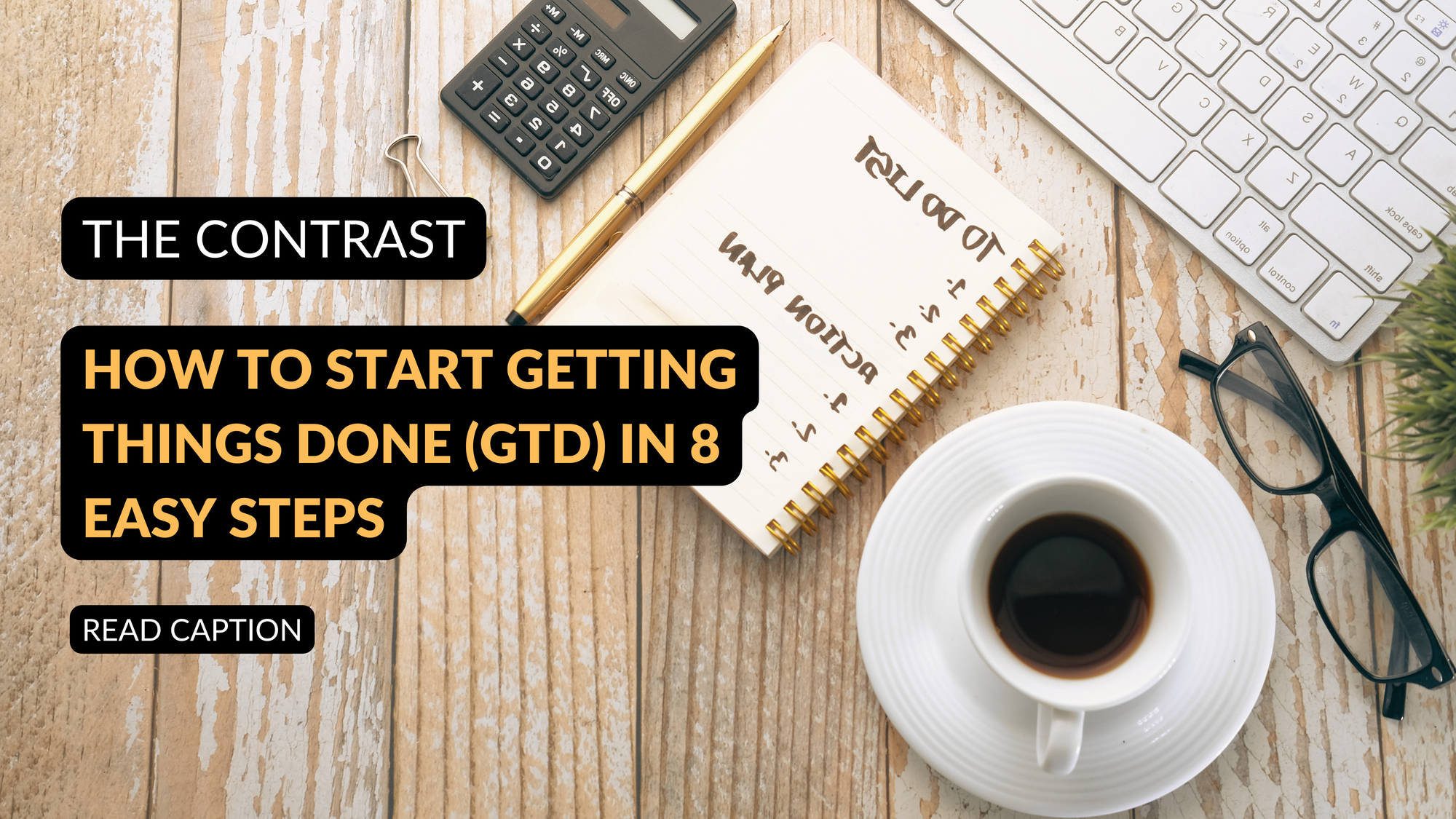How to Start Getting Things Done (GTD) in 8 Easy Steps

The Getting Things Done (GTD) method, created by productivity expert David Allen, is a game-changer for organizing your tasks, reducing stress, and staying on top of your responsibilities. The system focuses on capturing all your tasks, clarifying their next steps, and organizing them into actionable categories.If you’re looking to boost your productivity and feel more in control, here are 8 tips to start applying GTD today and why they work.
1. Capture Everything
Action Step: Write down every task, idea, or commitment in a trusted system—whether it’s a notebook, an app, or a digital tool like Evernote or Notion.
Why It Works: Capturing everything clears your mind of clutter and ensures you don’t forget important tasks.
2. Clarify Your Tasks
Action Step: Break down tasks into actionable steps. For example, instead of “Plan vacation,” write “Book flights” or “Research destinations.”
Why It Works: Clear, specific tasks are easier to start and complete than vague goals.
3. Use the Two-Minute Rule
Action Step: If a task takes less than two minutes, do it immediately. Examples include replying to an email or scheduling an appointment.
Why It Works: Small tasks often take more time and mental energy to track than to complete, so getting them done quickly reduces your list.
4. Organize with Contexts and Categories
Action Step: Group tasks by context or category, such as “Work,” “Home,” or “Errands.” You can also group by tools needed, like “Phone” or “Computer.”
Why It Works: Organizing tasks by context lets you focus on what you can realistically accomplish in a given situation.
5. Create a Next Actions List
Action Step: Maintain a list of tasks that you can act on right away, like making a phone call or drafting a document.
Why It Works: Having a clear list of next actions prevents you from feeling stuck or overwhelmed by large projects.
6. Review Weekly
Action Step: Set aside time each week to review your tasks, update your lists, and plan the week ahead.
Why It Works: Weekly reviews help you stay aligned with your goals, track progress, and reprioritize if needed.
7. Separate Projects from Tasks
Action Step: Break down large projects (e.g., “Launch a website”) into smaller, actionable tasks (e.g., “Write homepage content” or “Design logo”).
Why It Works: Managing projects as a series of tasks makes them more achievable and less intimidating.
8. Use a Trusted System
Action Step: Choose a system that works for you, whether it’s a digital tool (like Todoist or Trello) or a physical notebook. Stick to it consistently.
Why It Works: A single, trusted system ensures that nothing falls through the cracks and reduces mental effort.
Conclusion
The GTD method isn’t about doing more; it’s about doing what matters with clarity and focus. By capturing your commitments, organizing them effectively, and reviewing them regularly, you’ll transform how you manage your time and energy.Start small by implementing these tips today, and watch how the GTD framework helps you get things done with less stress and more confidence. Your productivity journey begins now—are you ready to take control?
